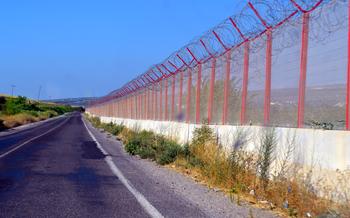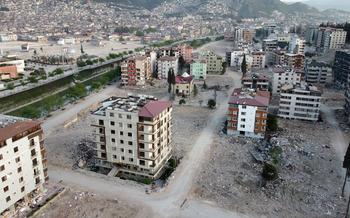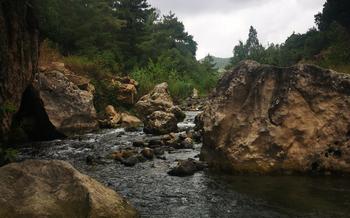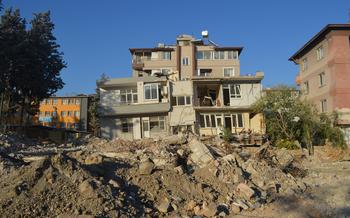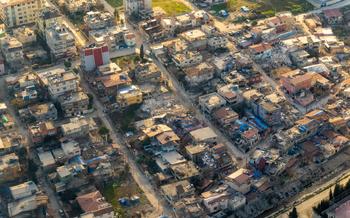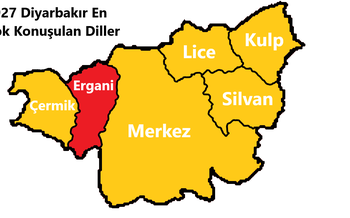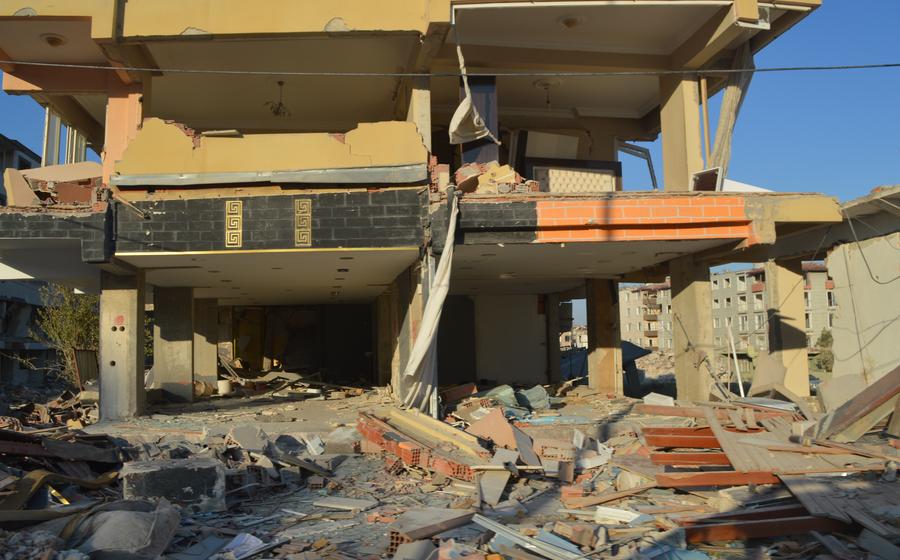
Kurtuluş Caddesi (Liberation Street)
- Kurtuluş Caddesi (Liberation Street): A Historical and Cultural Gem in Hatay
- A Walk Through Time: Tracing the History of Kurtuluş Caddesi
- Architectural Masterpieces: Admiring the Buildings of Kurtuluş Caddesi
- Culinary Delights: Exploring the Flavors of Kurtuluş Caddesi
- Shopping Haven: Unearthing Treasures in Kurtuluş Caddesi
- The Clock Tower: A Symbol of Time and History
- The French Consulate: A Vestige of Colonial Past
- The Church of St. Peter: A Place of Worship and History
- The Synagogue: A Symbol of Jewish Heritage
- The Hatay State Museum: A Journey Through History
- The Habib-i Neccar Mosque: A Sacred Sanctuary
- The Daphne Basilica: A Glimpse into Byzantine Architecture
- The People of Kurtuluş Caddesi: A Diverse Community
- Insider Tip: Exploring Hidden Gems Off the Beaten Path
Kurtuluş Caddesi (Liberation Street): A Historical and Cultural Gem in Hatay
Nestled in the heart of Hatay, Turkey, Kurtuluş Caddesi, also known as Liberation Street, stands as a testament to the city's rich history and vibrant culture. This historic street, once the heart of the French Mandate era, offers a unique blend of architectural styles, culinary delights, and shopping experiences, inviting travelers to embark on a journey through time and culture.
History: Unveiling the Rich Past of the Street During the French Mandate Era
During the French Mandate era, Kurtuluş Caddesi served as the administrative and commercial center of Hatay. The French influence can still be seen in the street's architecture and the layout of its shops and cafes. The street was renamed "Rue de la Liberté" (Liberation Street) to commemorate the end of French rule in 193
Architecture: Exploring the Unique Blend of Architectural Styles That Line the Street
Kurtuluş Caddesi is a living museum of architectural styles. Ottoman-era mansions with intricate stone carvings stand side by side with elegant French colonial buildings, while Art Nouveau flourishes add a touch of whimsy to the streetscape. This eclectic mix of architectural styles reflects the diverse cultural heritage of Hatay and its status as a crossroads of civilizations.
Cuisine: Savoring the Diverse Culinary Delights Offered by Local Restaurants and Cafes
Kurtuluş Caddesi is a culinary paradise, offering a tantalizing array of flavors to satisfy every palate. From traditional Turkish dishes served in family-run restaurants to international cuisine influenced by the diverse communities that have made Hatay their home, there's something for every foodie to savor. Don't miss the street food delights, where vendors offer mouthwatering snacks and treats that capture the essence of Turkish cuisine.
Shopping: Discovering Hidden Gems and Traditional Crafts Amidst the Bustling Shops
Kurtuluş Caddesi is a shopper's paradise, offering a treasure trove of unique handicrafts, souvenirs, and vintage finds. Explore the charming shops that line the street, where local artisans showcase their skills in traditional crafts such as pottery, weaving, and jewelry making. Discover hidden gems amidst the bustling shops, where you can find one-of-a-kind pieces to take home as a cherished memory of your time in Hatay.
A Walk Through Time: Tracing the History of Kurtuluş Caddesi
Kurtuluş Caddesi bears the weight of history, serving as a testament to the shifting tides of power and culture that have shaped Hatay's identity. During the French Mandate era, the street became the epicenter of French influence, with the construction of elegant buildings in the French colonial style. The street's name, Kurtuluş Caddesi, or Liberation Street, holds special significance as it commemorates the liberation of Hatay from French control in 193The successful struggle for independence left an indelible mark on the street's character, transforming it into a symbol of resilience and national pride.
Despite the challenges of war and occupation, Kurtuluş Caddesi persevered, retaining its unique blend of architectural styles and cultural influences. The street's resilience is a testament to the indomitable spirit of the people of Hatay, who have navigated the complexities of history while preserving their rich cultural heritage. Today, Kurtuluş Caddesi stands as a living history book, inviting visitors to embark on a journey through time as they explore its diverse architectural styles, savor its culinary delights, and discover the stories of its people.
Architectural Masterpieces: Admiring the Buildings of Kurtuluş Caddesi
As you stroll along Kurtuluş Caddesi, you'll be captivated by the architectural masterpieces that line the street, each telling a unique story of Hatay's rich history and cultural heritage.
Remnants of Ottoman architecture stand proudly amidst the modern cityscape, showcasing intricate tilework, graceful domes, and decorative arches that transport you back in time. These buildings, with their distinctive Ottoman aesthetic, serve as reminders of the region's deep-rooted traditions and heritage.
French colonial-style buildings, with their elegant facades, arched windows, and wrought-iron balconies, add a touch of European charm to the street. These architectural gems, reminiscent of the French Mandate era, reflect the significant influence of French culture on Hatay's urban landscape.
Moreover, the street is adorned with Art Nouveau flourishes, adding a touch of whimsy and creativity to the architectural ensemble. Look out for the intricate floral motifs, curved lines, and stained-glass windows that characterize this artistic movement, which left its mark on Kurtuluş Caddesi during the early 20th century.
Culinary Delights: Exploring the Flavors of Kurtuluş Caddesi
Indulge in a culinary adventure as you explore the diverse flavors of Kurtuluş Caddesi. From traditional Turkish cuisine to international influences and hidden street food gems, this vibrant street offers a gastronomic journey like no other.
Begin your culinary exploration at one of the many family-run restaurants, where you can savor authentic Turkish dishes prepared with love and fresh ingredients. Taste the mouthwatering kebabs, succulent pide (Turkish pizza), and hearty stews, all bursting with local flavors.
As you stroll down the street, be sure to sample the diverse flavors brought by international communities that have made Kurtuluş Caddesi their home. From aromatic Middle Eastern mezze to flavorful Italian pasta and tantalizing Indian curries, the street offers a culinary melting pot that reflects its rich cultural heritage.
Don't miss the hidden gems tucked away amidst the bustling shops and cafes. Discover small eateries serving up delicious snacks and treats that are sure to delight your taste buds. From crispy gözleme (stuffed flatbread) to sweet baklava pastries, these culinary treasures offer a glimpse into the local culinary traditions.
Whether you're seeking a hearty meal or a quick bite, Kurtuluş Caddesi is a culinary paradise that will satisfy every palate. Embrace the vibrant atmosphere, engage with the friendly locals, and let your taste buds guide you on an unforgettable gastronomic journey.
Shopping Haven: Unearthing Treasures in Kurtuluş Caddesi
Kurtuluş Caddesi is a shopper's paradise, offering a diverse range of traditional crafts, vintage finds, and culinary delights. Traditional crafts enthusiasts will find unique handicrafts and souvenirs made by local artisans, such as handmade pottery, intricate textiles, and delicate jewelry. These treasures can be found in small boutiques and workshops tucked away along the street.
Vintage lovers can explore the charm of vintage shops and antique stores, where they can discover hidden gems from different eras. From retro clothing and accessories to antique furniture and home décor, these shops offer a unique glimpse into the past.
Foodies can bring home specialty products from local shops and markets, such as artisanal cheeses, fresh olives, and fragrant spices. These culinary treasures are a delight for the senses and a perfect way to savor the flavors of Hatay.
The Clock Tower: A Symbol of Time and History
Amidst the vibrant streets of Kurtuluş Caddesi, one cannot miss the imposing presence of the iconic clock tower. This majestic landmark stands as a testament to the rich history and cultural heritage of Hatay. Its grand facade, adorned with intricate carvings and decorative elements, reflects the architectural prowess of a bygone era.
The clock tower has played a pivotal role in the life of the city, serving as a beacon of time for generations. Its melodious chimes have echoed through the streets, marking the passage of hours, days, and years. Locals and visitors alike rely on its reliable timekeeping, ensuring their daily routines remain in sync with the rhythm of the city.
Beyond its practical function, the clock tower holds immense historical significance. It was erected during the French Mandate era, a period that left an indelible mark on the city's identity. The tower stands as a tangible reminder of that era, symbolizing the fusion of cultures and influences that shaped Hatay's unique heritage.
Today, the clock tower has become an iconic symbol of Kurtuluş Caddesi and a beloved landmark among locals and tourists alike. Its presence evokes a sense of nostalgia, transporting visitors back to a time when the streets were filled with the hustle and bustle of a thriving city under French rule.
Whether admiring its architectural grandeur from afar or standing beneath its towering presence, the clock tower offers a glimpse into the rich history of Kurtuluş Caddesi. It is a symbol of time, a reminder of the past, and a testament to the enduring spirit of this vibrant city.
The French Consulate: A Vestige of Colonial Past
Amidst the vibrant streets of Kurtuluş Caddesi, one can't help but notice a striking architectural gem that stands as a testament to a bygone era - the French Consulate. This majestic building, with its elegant facade and intricate details, evokes a sense of grandeur and historical significance.
Stepping into the consulate is like stepping back in time. The building's grand entrance, adorned with intricate carvings and decorative elements, hints at the rich history that unfolds within its walls. Visitors can explore the various rooms, each with its unique charm and purpose, and learn about the role the consulate played during the French Mandate period.
Today, the French Consulate serves as a cultural center, hosting exhibitions, events, and educational programs that promote Franco-Turkish relations. It is a testament to the enduring legacy of the French presence in Hatay and a symbol of the ongoing friendship between the two nations.
The Church of St. Peter: A Place of Worship and History
Nestled within the heart of Kurtuluş Caddesi, the Church of St. Peter stands as a testament to the rich religious tapestry of Hatay. Its history is deeply entwined with the city's Christian heritage, dating back to the early days of Christianity when Antioch served as a significant center of the faith.
The architectural features of the church reveal a blend of Byzantine and Gothic influences, with intricate carvings and decorative elements adorning its facade. The interior boasts a spacious nave, elegant columns, and a beautifully preserved altar, creating a serene and awe-inspiring atmosphere.
Originally constructed as a Catholic church, St. Peter's has undergone several transformations over the centuries, reflecting the changing religious landscape of the region. Today, it serves as an active Greek Orthodox church, welcoming worshippers and visitors alike to experience its spiritual essence.
Beyond its religious significance, the Church of St. Peter holds deep historical importance. It has witnessed countless events, both joyous and sorrowful, playing a pivotal role in the lives of the local Christian community. Its walls have resonated with prayers, hymns, and the echoes of history, making it an enduring symbol of faith and resilience.
The Synagogue: A Symbol of Jewish Heritage
Kurtuluş Caddesi is home to a significant Jewish heritage, as evidenced by the presence of the historic synagogue, a testament to the diverse cultural tapestry of the street. Built during the Ottoman era, the synagogue stands as a poignant reminder of the Jewish community that once thrived in Hatay. Its intricate architectural design, featuring Moorish and Ottoman influences, showcases the rich blend of cultural influences that shaped the region's history.
Inside the synagogue, visitors can admire the well-preserved interior, which includes a grand sanctuary, a women's gallery, and a Torah ark. The synagogue's ornate decorations and religious artifacts offer a glimpse into the vibrant Jewish life that once filled these halls. Although the Jewish community has diminished over time, the synagogue remains a cherished symbol of their heritage, a reminder of the diverse cultural threads that have woven together the fabric of Kurtuluş Caddesi.
Currently, the synagogue serves as a cultural center, hosting events, exhibitions, and educational programs that aim to preserve and celebrate Jewish history and traditions. Visitors can explore the synagogue's fascinating history, learn about Jewish customs and rituals, and gain a deeper understanding of the cultural diversity that has shaped this vibrant street.
The Hatay State Museum: A Journey Through History
Nestled in the heart of Kurtuluş Caddesi, the Hatay State Museum stands as a testament to the rich cultural heritage of the region. Founded in 1948, the museum houses a diverse collection of artifacts and exhibits that span from ancient civilizations to modern times.
As you step inside, you'll embark on a journey through history, beginning with the earliest settlements in Hatay. Discover the legacy of the Hittites, Greeks, Romans, and Byzantines through their art, tools, and everyday objects. Admire the intricate mosaics and sculptures that once adorned ancient temples and palaces.
Delve deeper into the Islamic era and explore the contributions of the Umayyads, Abbasids, and Ottomans to the region. Marvel at the exquisite calligraphy, ceramics, and metalwork that showcase the artistic prowess of these civilizations.
The museum also sheds light on the unique cultural heritage of Hatay, home to a diverse array of ethnic and religious communities. Learn about the traditions, customs, and beliefs of the Arab, Kurdish, Armenian, and Jewish communities that have shaped the region's identity.
Interactive exhibits and educational programs make the museum an ideal destination for visitors of all ages. Temporary exhibitions and workshops offer a dynamic and engaging experience, providing a deeper understanding of Hatay's rich past and vibrant present.
Whether you're a history buff, an art enthusiast, or simply curious about the cultural tapestry of Turkey, the Hatay State Museum is a must-visit destination. It's a place where history comes alive, offering a glimpse into the diverse and fascinating heritage of this ancient land.
The Habib-i Neccar Mosque: A Sacred Sanctuary
Amidst the vibrant tapestry of Kurtuluş Caddesi, the Habib-i Neccar Mosque stands as a testament to the rich Islamic heritage of Hatay. Its history is deeply entwined with the life of Prophet Noah, who is revered as a significant figure in both Islamic and Christian traditions. According to local lore, Prophet Noah, known as Habib-i Neccar in Turkish, is believed to have lived and preached in the region. The mosque is named in his honor, paying homage to his legacy and spiritual influence.
Architectural Design
The Habib-i Neccar Mosque showcases a unique blend of architectural styles, reflecting the diverse influences that have shaped Hatay's history. Its minaret, a symbol of Islamic architecture, rises gracefully towards the sky, adorned with intricate carvings and tilework. The mosque's courtyard, a serene and contemplative space, features a central fountain surrounded by lush greenery, creating a tranquil atmosphere for prayer and reflection.
Cultural Symbolism
The Habib-i Neccar Mosque holds immense cultural significance for the people of Hatay. It represents the deep-rooted Islamic traditions that have been an integral part of the region's identity for centuries. The mosque is not only a place of worship but also a symbol of unity and harmony among the diverse communities that call Hatay home. It serves as a reminder of the shared history and cultural heritage that binds the people of this vibrant city together.
The Daphne Basilica: A Glimpse into Byzantine Architecture
Nestled amidst the ancient ruins of Antioch, the Daphne Basilica stands as a testament to the rich architectural heritage of the Byzantine era. Built in the 5th century AD, this once-magnificent basilica was a marvel of its time. Its grand design, intricate mosaics, and soaring columns captivated visitors from far and wide.
The basilica was dedicated to Saint Babylas, a revered martyr who was believed to have performed miracles at the site. As a result, the basilica became a popular pilgrimage destination, attracting devout Christians from across the region. Its fame and significance grew over the centuries, transforming it into one of the most important religious centers in the Byzantine Empire.
Today, the Daphne Basilica lies in a state of ruin. Time, earthquakes, and neglect have taken their toll on this once-glorious structure. While much of the basilica has been lost, its remnants still hint at its former grandeur. Visitors can explore the site and admire the surviving architectural elements, including the massive columns, intricate capitals, and fragments of colorful mosaics.
Despite its dilapidated state, the Daphne Basilica remains a significant historical and archaeological site. It offers valuable insights into the architectural prowess of the Byzantine Empire and the importance of religious devotion during that era. Ongoing preservation efforts aim to protect and restore the basilica, ensuring that its legacy continues to inspire future generations.
The People of Kurtuluş Caddesi: A Diverse Community
Kurtuluş Caddesi is a melting pot of cultures, religions, and traditions. The people who live and work in this vibrant street represent a rich tapestry of ethnicities and backgrounds. Arabs, Kurds, Armenians, Jews, and Turks have all made their home in Kurtuluş Caddesi, creating a diverse and harmonious community.
The street's cultural heritage is reflected in its architecture, cuisine, and festivals. The Ottoman-style houses, French colonial buildings, and Armenian churches stand side by side, symbolizing the harmonious coexistence of different cultures. The local restaurants offer a diverse range of cuisines, from traditional Turkish dishes to Armenian specialties and international fare. The annual Kurtuluş Caddesi Festival celebrates the street's diverse cultural heritage with music, dance, and food from around the world.
The people of Kurtuluş Caddesi are proud of their unique heritage and are always eager to share their stories with visitors. They are known for their hospitality and warmth, and they welcome visitors with open arms. Whether you are a history buff, a foodie, or simply someone who loves to experience new cultures, Kurtuluş Caddesi is a must-visit destination.
Insider Tip: Exploring Hidden Gems Off the Beaten Path
While Kurtuluş Caddesi offers a wealth of attractions, venturing off the beaten path unveils even more hidden gems. Explore the side streets and alleys to discover charming cafes nestled amidst historic buildings, where you can savor traditional Turkish coffee and engage in fascinating conversations with locals. Seek recommendations from friendly shop owners or hotel staff for unique experiences that cater to your interests, whether it's learning about traditional crafts, savoring local delicacies, or simply immersing yourself in the vibrant atmosphere of this captivating street. These hidden gems often provide a glimpse into the authentic side of Kurtuluş Caddesi, allowing you to create a truly memorable and authentic travel experience.


